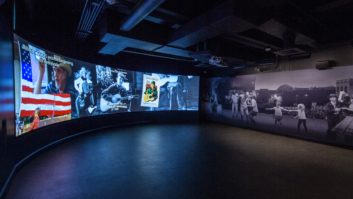As the Golden Age art institution reopens after a decade of unprecedented renovation, its director, Wim Pijbes, puts us back in the frame.
When a penniless thirty-something by the name of Vincent van Gogh visited the new Rijksmuseum in 1885, he was so inspired by what he saw that he resolved to completely reinvent his own creative process. The work of one Dutch Old Master in particular stood out, as Vincent would write to his brother Theo in October of that year: ‘Rembrandt is so deeply mysterious that he says things for which there are no words in any language.’ A fanboy was born. Inspired by the pomp of venerable French museums like the Louvre, the Rijksmuseum (meaning: ‘State Museum’) had been founded in The Hague in 1800 to house the spoils of the Golden Age, and was moved to Amsterdam at the behest of King Louis Bonaparte in 1808, before a suitably grand building could be agreed upon. In 1876 a design contest was held to find the architect who could provide the museum’s priceless collection with a worthy permanent residence.
The winning design was by Pierre Cuypers, and his richly decorated building literally namechecks the glories of Dutch art history in gold leaf. In the spring of 2013, the museum finds itself in a similar situation to 1885. For a decade now, the lion’s share of Cuypers’ Rijksmuseum building has been closed for one of the most significant programmes of renovation ever undertaken by any museum, anywhere. Spanish architecture firm Cruz y Ortiz has turned Cuypers’ original 19th-cen-tury building into a bright, spacious place, with a jaw-dropping new light-flooded entrance, state-of-the-art facilities and restored gal- leries. Parisian museum designer Jean-Michel Wilmotte has created the fixtures and furnishings. Brand new interactive exhibitions look to the iPhone, and beyond. ‘We present Old Masters in a new and exciting way, and everything that visitors see and experience will be totally new,’ says director Wim Pijbes, the art historian who took over in 2008.
During the lockdown, a core, ‘greatest hits’ collection of works has been housed in the museum’s southerly Philips Wing. For the reopening, The Night Watch – most trea- sured of all the Rijksmus-eum’s riches, and comparable to the Louvre’s Mona Lisa in terms of its fame and mystique – is returning to the hall purpose-built for it in 1906; something that Pijbes couldn’t be happier about: ‘It was and is one of the icons of the Rijksmu- seum, larger than life, world-famous. The entire Rijksmuseum was built around this painting and it returns to the room where it belongs.’ So, as the Old Masters reclaim their rightful places among an ever-evolving collection of Dutch and Dutch-inspired Masters – check out the newly acquired ‘Mondrian’ dress by Yves Saint Laurent, for example – we can only speculate about which Master of tomorrow might be waiting in line, ready for inspiration to strike. It really is a case of watch this space.





